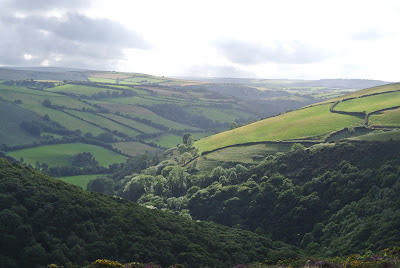Day 11, Tuesday 21 August
Today on our way to Bath we went through the towns of Pucklechurch, Didmarton and Knockdown. Now I thought the Welsh had the scoop on strange and unusual names but the English rival the crazy tongue twister names with absurd and ridiculous names.
Bath
I’m sure I saw Jane Austen today; or at least her shadow in the wonderful buildings of Bath.In Northanger Abbey Jane writes 'They arrived in Bath. Catherine was all eager delight; - her eyes were here, there, everywhere, as they approached its fine and striking environs, and afterwards drove through those streets which conducted them to the hotel. She was come to be happy, and she felt happy already'.
The Roman baths
We walked today where Romans walked on 2000 year-old pavements beside the steaming pools of the baths. This extraordinary testament to the engineering skills and lifestyle that the Romans created to imitate life as they would have lived it in Rome.Standing before the mysterious green waters of the great pool at Bath, overlooked by time-darkened statues of Roman emperors, you cannot help but feel transported in time, back to the days when Roman citizens and centurions bathed in this pool and offered homage to the patron goddess of the waters, Minerva. It's an illusion, of course. The familiar green hue of the pool is not the result of mystery, but of algae, caused by the water's exposure to the open air.
Roman houses had water supplied via lead pipes. However, these pipes were taxed according to their size, so many houses had just a basic supply and could not hope to rival a bath complex. Therefore for personal hygiene, people went to the local baths. The bath complex was not just about cleanliness it was also a gathering point and served a very useful community and social function.
Taking a bath was not a simple chore. There was not one bath to use in a large complex; not dissimilar to a good sports complex today. A visitor could use a cold bath (the frigidarium), a warm bath (the tepidarium) and a hot bath (the caldarium). The Bath complex also contained an exercise area (the palaestra), a swimming pool and a gymnasium.
Women would come to the baths with their slaves for beauty treatments and compare who had the best behaved slaves, the best oils and the best beauty treatments. Sound familiar?
The Roman Baths Museum contains many objects of interest, including thousands of objects thrown into the spring as offerings to the goddess. These offerings including curses. Messages inscribed on sheets of lead or pewter that were rolled up and thrown into the spring where the spirit of the goddess dwelt. Theft was a problem in Roman bath houses, so slaves watched bathers' property and curse tablets punished those who stole.
Imagine emerging wet from a swimming pool to find your clothing gone. How would you get home? Would a kindly stranger lend you a jacket? Would you notify the police? The Romans didn't have police, but they did have something else that worked as a deterrent, the fear of the gods. In general, the tone of the tablets displayed at Bath seems excessive, out of proportion to the crime.
Try a sip of the hot mineral spring water in the Pump Room's fountain - it tastes truly awful, but has long been believed to have healing powers!
 |
| Royal Crescent in Bath. A Georgian classic. |
Bath to Lynmouth
Driving through the Devon countryside this afternoon was spectacular. Imagine someone has thrown a patchwork quilt over a very lumpy bed. The fields surrounded by their hedgerows represent the patches on a quilt. The intensity and variety of greens, sit aside lush heath and fields that have been cropped and sit yellowing in the summer sun. Picture perfect.Lynmouth is a quiet, picturesque harbour village where the rivers of the East and West Lyn join to meet the sea. Thatched white walled cottages sit crowded on the side of the clifs overlooking the very cute seaside town. It has the second highest tides in the world, which are sometimes quite spectacular. The beach (or what the English take for a beach) is a sludgy grey slop, until it reaches they grey smooth rocks that create bubbles as the waves cascade over their smooth surfaces.
 |
| Looking over the river from our B&B at low tide. |
Giles, our host at the Riverside Cottages B&B, is a character right out of Doc Marten. When I asked him about the dress code in the restaurant he recommended for our dinner tonight he responded: “Oh (with a Devon inflection) anything goes ‘ere. Yer need clothes though.” I’m thinking he means relaxed casual.
 |
| On the pier at Lynmouth. |


No comments:
Post a Comment